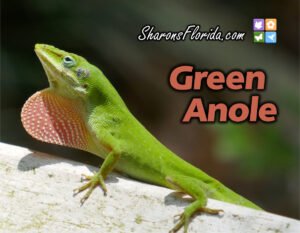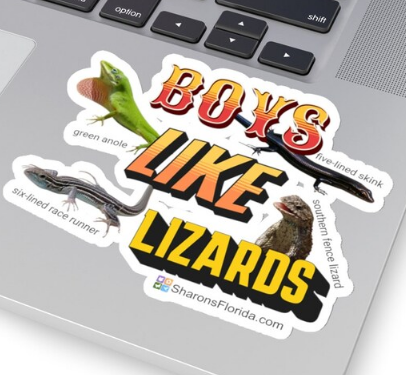Green Anoles in Central Florida
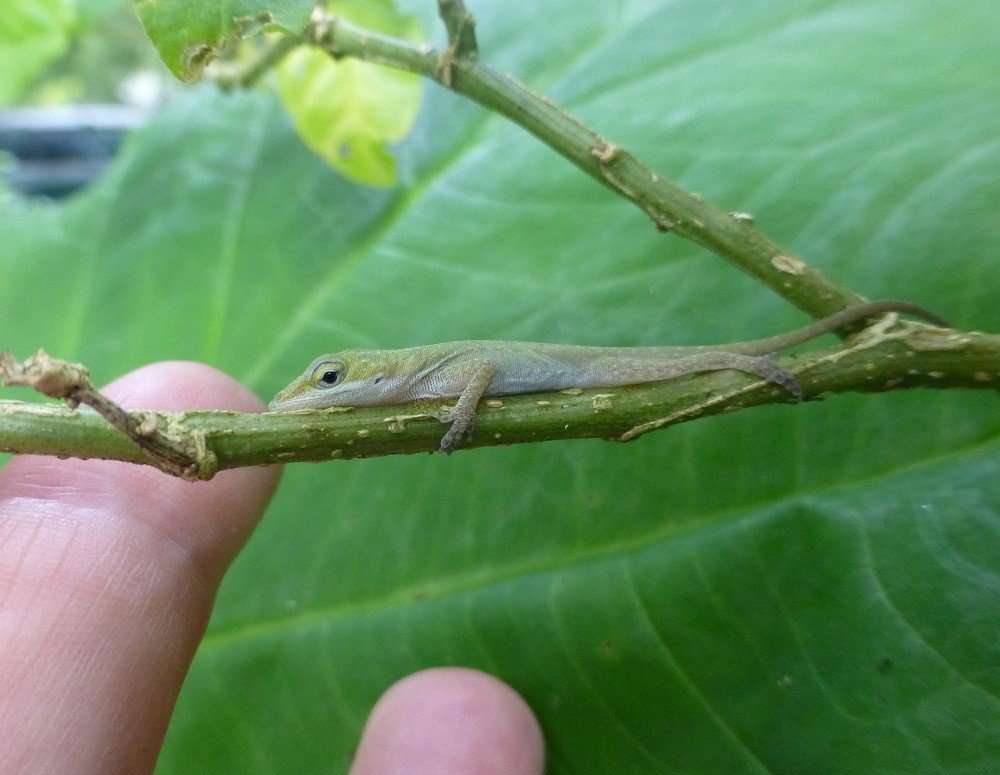
The green anole, Anolis carolinensis, is the only native anole in the United States. Its range is the southeastern United States.
Anole is pronounced uh-nole, an-ole, or uh-nol-a.
Green anoles, Anolis carolinensis, in Florida are not as common as they once were because a similar looking, non-native lizard, called the brown anole, Anolis sagrei, is taking over its habitat. Many people confuse the non-native brown anole with the green anole, but there are many differences between the two.
Green anoles (Anolis carolinensis) appear similar to brown anoles (Anolis sagrei) but can change color from green to brown, do not have dorsal ridges, do not have splotchy or patterned colorations, are not as wary of humans and pets, and do not reproduce at the high rate of brown anoles.
The green anole is a slender, graceful, lizard that moves with a dignified confidence scanning the landscape with its large watchful eyes. Green anoles ruled their Florida habitat virtually undeterred until the 1970’s when the Cuban brown anole began to invade their Florida habitat in a much broader range than just Miami and the Florida Keys.
Green anoles are related to iguanas. They can change their color from green to brown and vise-versa. Their color generally reflects the color of vegetation they are on as a camouflage technique. However, color change is also dictated by temperature and emotions. Cooler temperatures, below 70 degrees, and stress keep them in their brown phase and once the weather warms up they stay mostly green. Confrontations with rivals will have the winner turning bright green and the loser brown. The hormone intermedin, which is secreted from the pituitary gland, is responsible for the change in color in their skin cells. [1] Brown anoles can only change to different shades of brown and never to green.
The green anole has a long tapered head and tail and grows to a maximum length of eight inches. Immature anoles look like smaller versions of the adults.
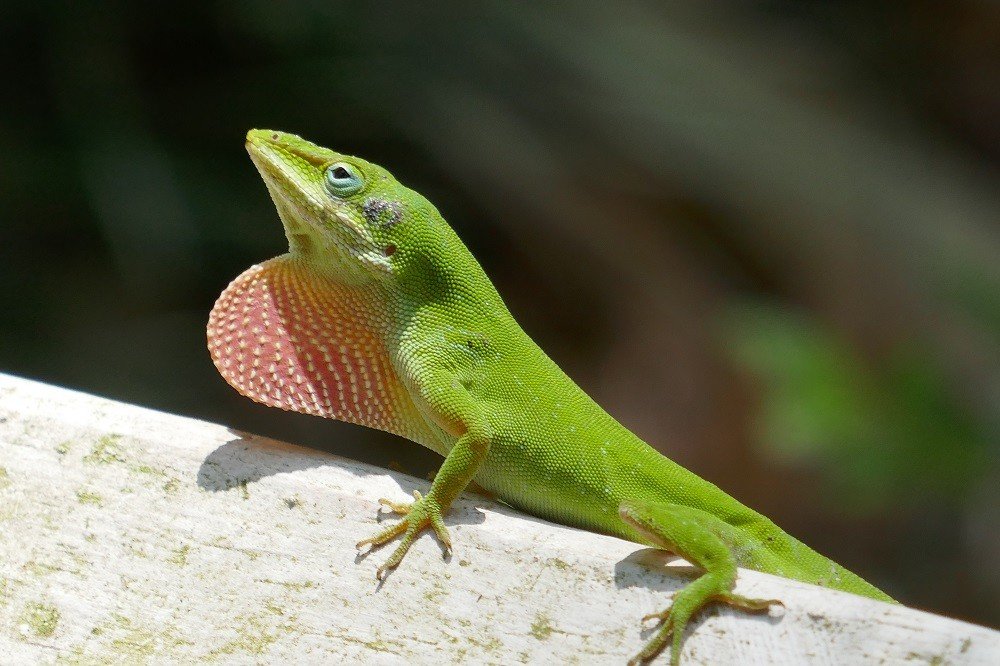
Their toes are long and slender with adhesive toepads that allow them to climb most surfaces. Their skin consists of very fine scales and they are a solid color. Green anoles do not have any dorsal ridges or splotchy coloration patterns but are a solid color pattern. Having said that I have seen quite a few with splotches along their spine but are clearly green anoles in their body shape and character traits so there is cross breeding going on to some degree.
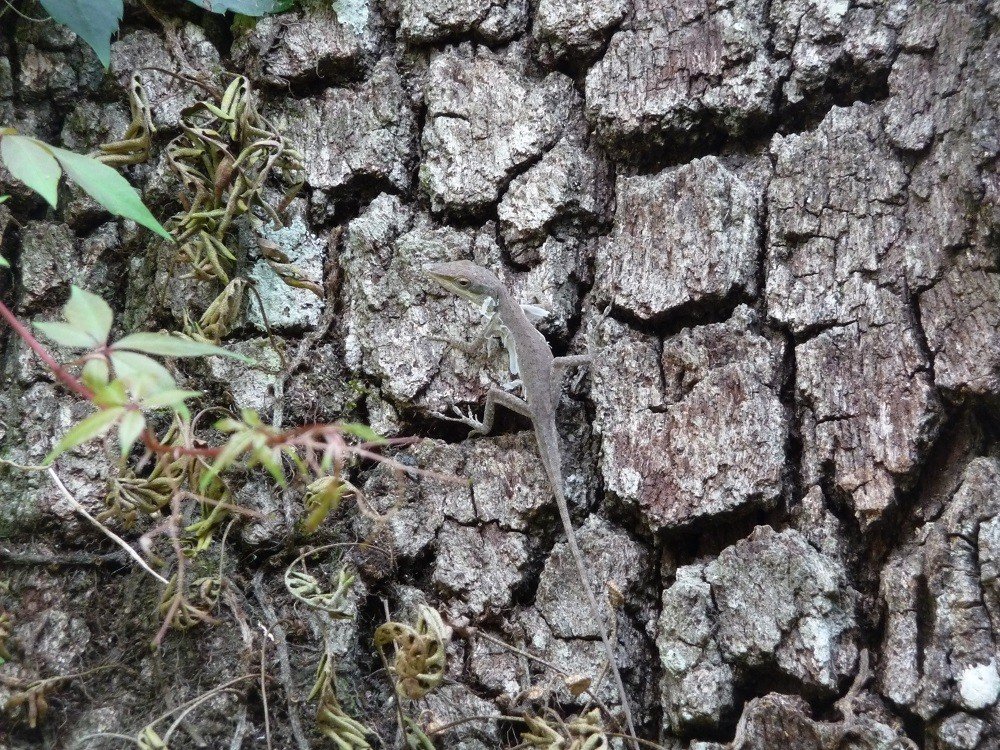
Male green anoles display to attract females and defend their territories by extending their throat fan, or dewlap. The dewlap is a flap of skin under the throat that is extended outwards by the hyoid bone in their throats. Both sexes have dewlaps, but are larger and much more often displayed by the males. Dewlaps of green anoles are generally pink in color, but can be gray and green. Brown anoles are orange-red with a thin yellow border.
The green anole diet consists of invertebrates such as insects and spiders and will eat just about anything they can fit into their mouths. They are active during the day and can be found searching for food and maintaining their territory around homes and gardens. They prefer to hunt on vegetation, but can be seen moving from place to place via walls, rails, or decks. They do not generally forage on the ground like the brown anole, but prefer to stay at least a few feet above on low lying shrubbery and flowers. Possibly the invasive brown anole has shifted the green anoles habitat even further skyward.
Brown anoles (Anolis sagrei) are an invasive nonnative species that is displacing our beautiful green anoles. Not only do they take over the native green anole habitat but they consume green anole eggs and young.
Excerpt from a doctoral dissertation, Harvard University, by Yoel Eli Stuart. Character Displacement and Community Assembly in Anolis Lizards.
“…Regardless of which interaction(s) is at play, we have shown that A. carolinensis has adapted morphologically to a perch-height shift driven by the invasion of A. sagrei. …” [2]
Green anoles move in a very stately fashion and rarely seem to be hurried, or harried, unlike the brown anole. They will generally let you be near them as they go about their business, but once you get too close, or overstay your welcome, they will gracefully move out of range. They don’t seem to possess the extreme flight response of the brown anole. Since they are in their native habitat going about their normal routine they have yet to have evolved the behavior. Of course they can move very quickly to get out of harm’s way, but normally are very mellow and calm.
Green anoles mate from early spring on throughout the summer. The female lays one egg at a time in damp soil weekly throughout the summer, although it can be several weeks in between her egg deposits. Incubation time for the green anole is generally thirty to forty days.
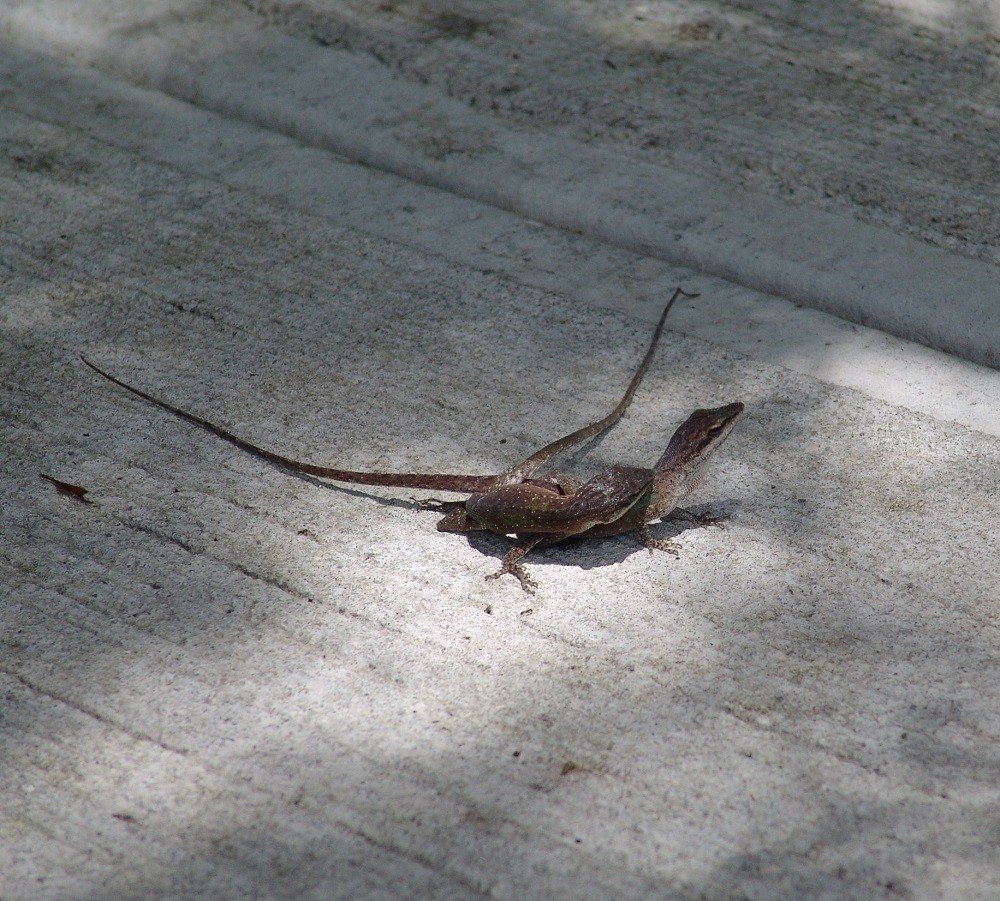
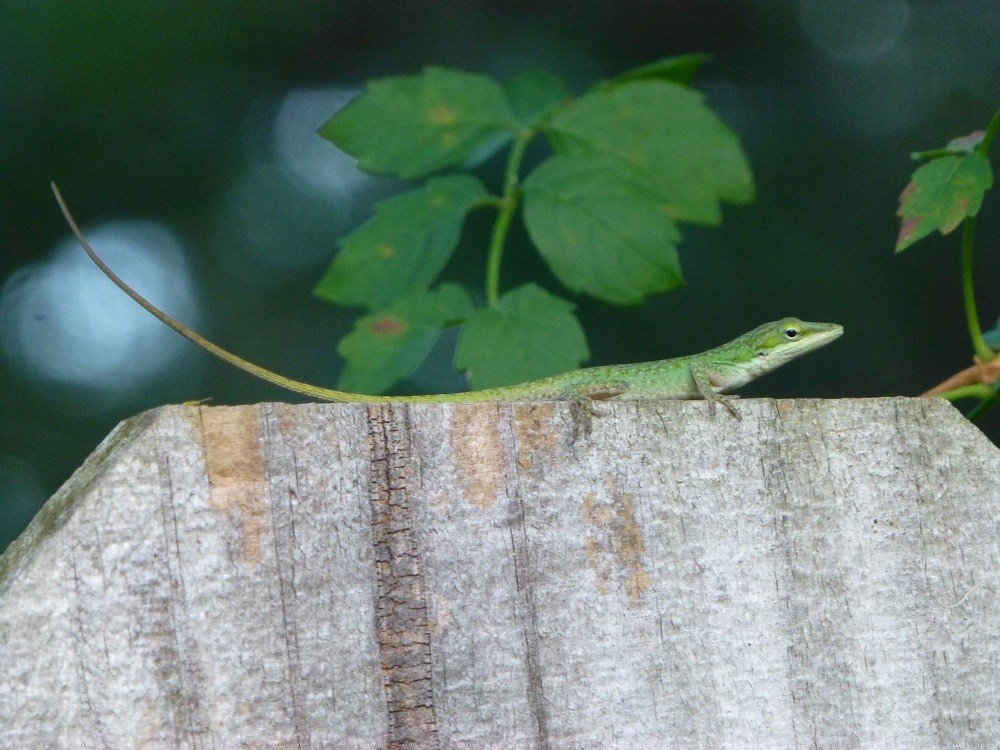
Sadly….”Native green anoles have all but disappeared in many locales within peninsular Florida, while the range and population of brown anoles continue to increase. The introduction of two subspecies of brown anoles into southern Florida, the Cuban brown (Anolis s. sagrei) and the Bahaman brown (Anolis s. ordinatus), subsequent interbreeding between them has apparently resulted in a new race. These brown anoles rapidly became established in much of peninsular Florida …” [3]
If you are lucky enough to have a green anole on your property … feel blessed and enjoy it while it lasts. Be sure to keep your green space free of pesticides so the wildlife can have clean food and habitats.
They are under threat by pesticide use, habitat loss, feral cats, and the brown anole.
Keep them safe from your pets as well. Pets love to chase lizards so save all you can from your dogs and cats.
Green anoles are not very common in Florida anymore. They can use all the help we can provide.
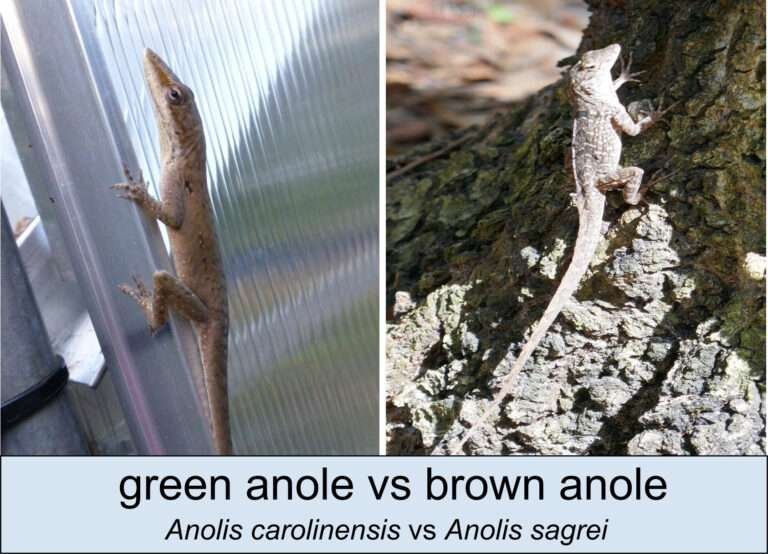
Footnotes:
[1] Emmel, Thomas C.. Florida’s Fabulous Reptiles & Amphibians Snakes, Lizards, Alligators, Frogs, and Turtles. Tampa, FL: World Publications, 1991. Print.
[2] Stuart, Yoel Eli. Character Displacement and Community Assembly in Anolis lizards. Doctoral dissertation, Harvard University. 2013. [https://dash.harvard.edu/handle/1/11156787]
[3] Scott, C.. Endangered and Threatened Animals of Florida and Their Habitats. Austin: University of Texas Press. 2004
My Etsy Store Items
You Might Also Like: Gulf Fritillary

